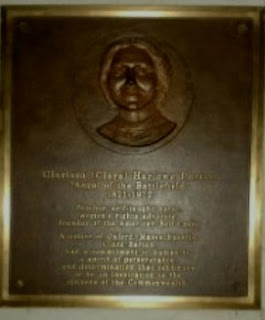Book Review: Leonardo's Laptop by Ben Shneiderman
Leonardo’s Laptop: Human Needs and the New
Computing Technologies by
Ben Shneiderman (2002) is a book that combines the evolution of technological advances
with the artistic, mathematical, and scientific work of Leonardo da Vinci (1452-1519). Historians estimate that da Vinci filled
13,500 pages with his writings and artistry.
Today, 5,000 pages are still in existence.
Here are some of the key points from Leonardo’s
Laptop:
Page 5: “Leonardo was the first person to
accurately draw and recognize the role of curved spines in humans.”
Page 5: “Leonardo had a distinctly inquisitive
mind and capacity for independent thinking that led him to go further than his
contemporaries on many topics.”
Page 13: “Four universal states of man: Mirth,
weeping, contention, and work.”
Page 57: “We admire Leonardo da Vinci for his
scientific spirit, his artistic skill, and his desire to produce something of
value that also pleased his patrons. He
painted the mysterious Mona Lisa to
please her husband, Francesco del Giocondo, while demonstrating his visual
insights to facial anatomical details of her cheekbones, mouth, and eyes. Even the background shows off his knowledge
of geology, plants, and river ecology.”
Page 76: “People have always needed food,
shelter, and medical care, and they always will. People also need, seek, and thrive on
emotional relationships with family, friends, neighbors, and colleagues. The payoff from a technology innovation is
that it supports some human needs while minimizing the downside risks.”
Page 77: “The social commentator and historian
of technology Lewis Mumford (1895-1990), who characterized the goal of
technology with quiet simplicity: ‘to serve human needs.’”
Page 77: “Leonardo’s thoughts about human needs
are reflected in his list of four prime human activities: mirth, weeping,
contention, and work.”
Page 78: “In the 1950s, the psychologist Abraham
Maslow proposed a hierarchy of human needs.”
1. Physiological: biological survival, food,
water, air.
2. Safety: Secure house, no physical threats.
3. Love, affection, belongingness: giving and
receiving.
4. Esteem: Self-respect and respect for others,
generates self-confidence.
5. Self-Actualization: Fulfillment of what a
person was “born to do” … A musician must make music, and artist must paint,
and a poet must write.
Page 80: “4 circles of relationships: Self,
family and friends, colleagues and neighbors, citizens and markets.”
Page 85: “4 stages of activities: Collect,
relate, create, donate
Page 104: “Visionary insights come from thinking
more about human needs than technology possibilities.”


Comments
Post a Comment